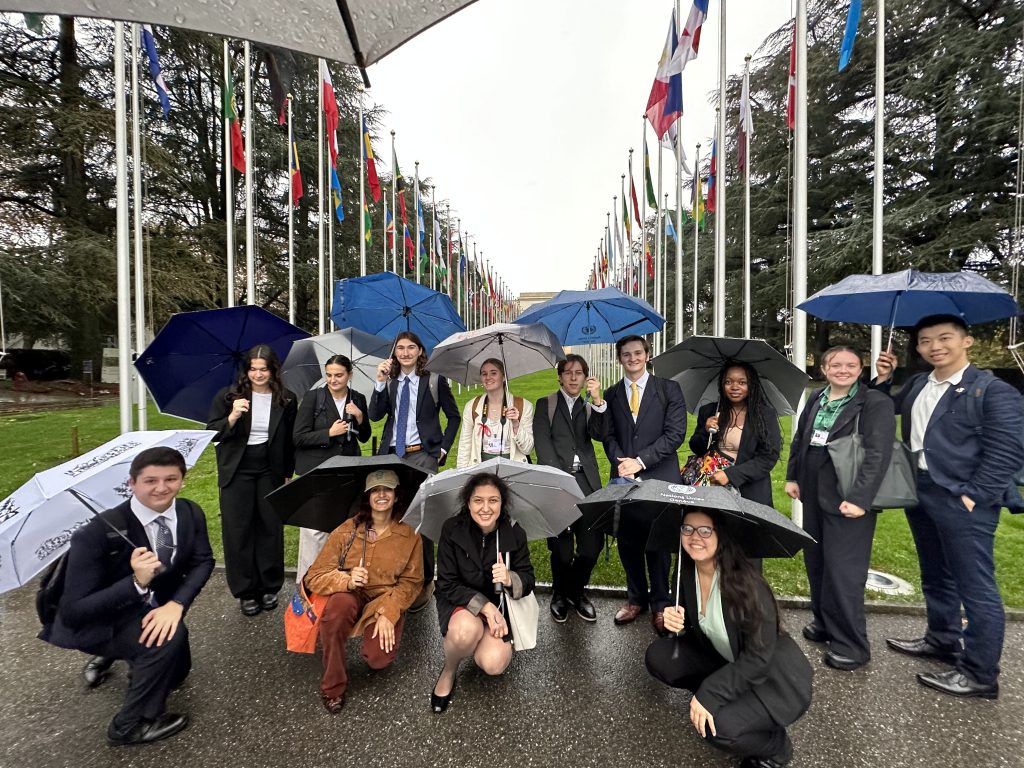By Gary Shteyman

Today we visited the Palais de Nations, the headquarters of the United Nations in Geneva. After traversing several blocks of rainy Genevan road, we found ourselves in the main building, which we immediately left to make our way into the old building. The old building was used by the League of Nations, the international coalition that preceded the United Nations. The League of nations operated from 1920-1946, and today is mostly known by students as the one group you cover in history class just to make the United Nations look better. Now, the building that the League used for meetings holds old documents and relics from its time in service. The most surprising relic I saw was hidden in the very back of the room. There was a television screen with several video options available for me to click on. The very first video was a speech by the last person I would expect to be in a United Nations archive: Joseph Goebbels. Minister of Propaganda in the Third Reich, Goebbels is a name I have spoken about a lot recently, as I am currently taking Nazi Germany and the Holocaust as part of my minor in History. Through a combination of supporting documents nearby and hasty Google translation, I found out that Goebbels was there to negotiate a European-wide disarmament treaty. His country’s interest was making sure they were on equal footing with the rest of Europe post-Treaty of Versailles, so they lobbied to reduce arms . Other countries were not amicable to this arrangement, and Germany ended up leaving the League of Nations soon after. One would think this would set off alarm bells in the minds of other European diplomats, but nothing was done until Germany invaded Poland several years later. While there are many details I am leaving out, it was nevertheless fascinating to see how early multilateralism worked (or in this case, did not work) in Europe.
After we explored the old building, we went into the new building, that is currently in use by the United Nations. We were allowed to enter an empty conference room that was recently built, as well as attend a session on climate justice. After observing the Minamata Convention’s first Plenary session in the morning, I was admittedly used to the routine, and itching to explore elsewhere. This time, the most impactful thing I saw was not a video of a Nazi, but rather an infographic depicting all the various branches of the UN. Prior to this class, I thought the United Nations was this larger-than-life organization, making decisions that only affect the very tops of governments. After a few months into the semester, I’d come to terms with the fact that the UN impacts a lot more people than I thought, but not to a significant extent. Today, however, I saw that the United Nations has regulatory bodies in everything from energy to labor to tourism. There are so many subdivisions and co-organizations within the United Nations framework, one would think it was a fully functional government in its own right, and not the result of collaboration from 193 countries. I was blown away by how international diplomacy evolved from the ineffectual League of Nations to the sprawling legislative apparatus of the UN, all within 100 years. It is a lesson I will be reminded of frequently in the coming days, and one that will give me new perspective whenever I am stuck in traffic due to the roads being shut down at home due to UN meetings.